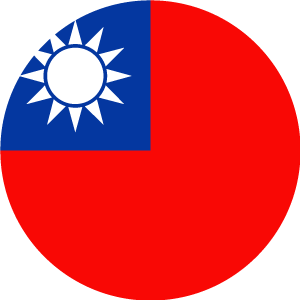IEICE TRANSACTIONS on Fundamentals
Combined Use of Rising and Falling Edge Triggered Clocks for Peak Current Reduction in IP-Based SoC/NoC Designs
Summary :
In a typical SoC (System-on-Chip) design, a huge peak current often occurs near the time of an active clock edge because of aggregate switching of a large number of transistors. The number of aggregate switching transistors can be lessened if the SoC design can use a clock scheme of mixed rising and falling triggering edges rather than one of pure rising (falling) triggering edges. In this paper, we propose a clock-triggering-edge assignment technique and algorithms that can assign either a rising triggering edge or a falling triggering edge to each clock of each IP core of a given IP-based SoC/NoC (Network-on-Chip) design. The goal of the algorithms is to reduce the peak current of the design. Our proposed technique has been implemented as a software system. The system can use an LP technique to find an optimal or suboptimal solution within several seconds. The system also can use an ILP technique to find an optimal solution, but the ILP technique is not suitable to be used to solve a complex design. Experimental results show that our algorithms can reduce peak currents up to 56.3%.
- Publication
- IEICE TRANSACTIONS on Fundamentals Vol.E93-A No.12 pp.2581-2589
- Publication Date
- 2010/12/01
- Publicized
- Online ISSN
- 1745-1337
- DOI
- 10.1587/transfun.E93.A.2581
- Type of Manuscript
- Special Section PAPER (Special Section on VLSI Design and CAD Algorithms)
- Category
- High-Level Synthesis and System-Level Design
Authors
Keyword
Latest Issue
Copyrights notice of machine-translated contents
The copyright of the original papers published on this site belongs to IEICE. Unauthorized use of the original or translated papers is prohibited. See IEICE Provisions on Copyright for details.
Cite this
Copy
Tsung-Yi WU, Tzi-Wei KAO, How-Rern LIN, "Combined Use of Rising and Falling Edge Triggered Clocks for Peak Current Reduction in IP-Based SoC/NoC Designs" in IEICE TRANSACTIONS on Fundamentals,
vol. E93-A, no. 12, pp. 2581-2589, December 2010, doi: 10.1587/transfun.E93.A.2581.
Abstract: In a typical SoC (System-on-Chip) design, a huge peak current often occurs near the time of an active clock edge because of aggregate switching of a large number of transistors. The number of aggregate switching transistors can be lessened if the SoC design can use a clock scheme of mixed rising and falling triggering edges rather than one of pure rising (falling) triggering edges. In this paper, we propose a clock-triggering-edge assignment technique and algorithms that can assign either a rising triggering edge or a falling triggering edge to each clock of each IP core of a given IP-based SoC/NoC (Network-on-Chip) design. The goal of the algorithms is to reduce the peak current of the design. Our proposed technique has been implemented as a software system. The system can use an LP technique to find an optimal or suboptimal solution within several seconds. The system also can use an ILP technique to find an optimal solution, but the ILP technique is not suitable to be used to solve a complex design. Experimental results show that our algorithms can reduce peak currents up to 56.3%.
URL: https://global.ieice.org/en_transactions/fundamentals/10.1587/transfun.E93.A.2581/_p
Copy
@ARTICLE{e93-a_12_2581,
author={Tsung-Yi WU, Tzi-Wei KAO, How-Rern LIN, },
journal={IEICE TRANSACTIONS on Fundamentals},
title={Combined Use of Rising and Falling Edge Triggered Clocks for Peak Current Reduction in IP-Based SoC/NoC Designs},
year={2010},
volume={E93-A},
number={12},
pages={2581-2589},
abstract={In a typical SoC (System-on-Chip) design, a huge peak current often occurs near the time of an active clock edge because of aggregate switching of a large number of transistors. The number of aggregate switching transistors can be lessened if the SoC design can use a clock scheme of mixed rising and falling triggering edges rather than one of pure rising (falling) triggering edges. In this paper, we propose a clock-triggering-edge assignment technique and algorithms that can assign either a rising triggering edge or a falling triggering edge to each clock of each IP core of a given IP-based SoC/NoC (Network-on-Chip) design. The goal of the algorithms is to reduce the peak current of the design. Our proposed technique has been implemented as a software system. The system can use an LP technique to find an optimal or suboptimal solution within several seconds. The system also can use an ILP technique to find an optimal solution, but the ILP technique is not suitable to be used to solve a complex design. Experimental results show that our algorithms can reduce peak currents up to 56.3%.},
keywords={},
doi={10.1587/transfun.E93.A.2581},
ISSN={1745-1337},
month={December},}
Copy
TY - JOUR
TI - Combined Use of Rising and Falling Edge Triggered Clocks for Peak Current Reduction in IP-Based SoC/NoC Designs
T2 - IEICE TRANSACTIONS on Fundamentals
SP - 2581
EP - 2589
AU - Tsung-Yi WU
AU - Tzi-Wei KAO
AU - How-Rern LIN
PY - 2010
DO - 10.1587/transfun.E93.A.2581
JO - IEICE TRANSACTIONS on Fundamentals
SN - 1745-1337
VL - E93-A
IS - 12
JA - IEICE TRANSACTIONS on Fundamentals
Y1 - December 2010
AB - In a typical SoC (System-on-Chip) design, a huge peak current often occurs near the time of an active clock edge because of aggregate switching of a large number of transistors. The number of aggregate switching transistors can be lessened if the SoC design can use a clock scheme of mixed rising and falling triggering edges rather than one of pure rising (falling) triggering edges. In this paper, we propose a clock-triggering-edge assignment technique and algorithms that can assign either a rising triggering edge or a falling triggering edge to each clock of each IP core of a given IP-based SoC/NoC (Network-on-Chip) design. The goal of the algorithms is to reduce the peak current of the design. Our proposed technique has been implemented as a software system. The system can use an LP technique to find an optimal or suboptimal solution within several seconds. The system also can use an ILP technique to find an optimal solution, but the ILP technique is not suitable to be used to solve a complex design. Experimental results show that our algorithms can reduce peak currents up to 56.3%.
ER -




















